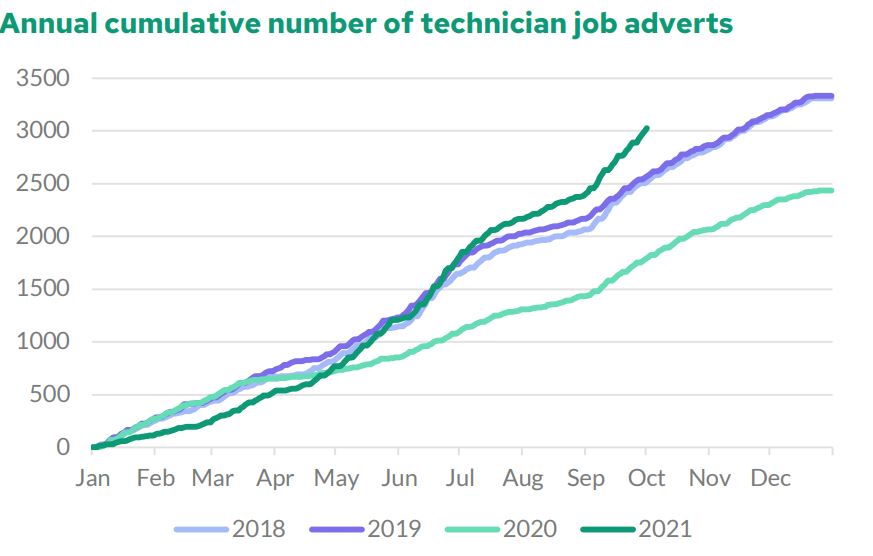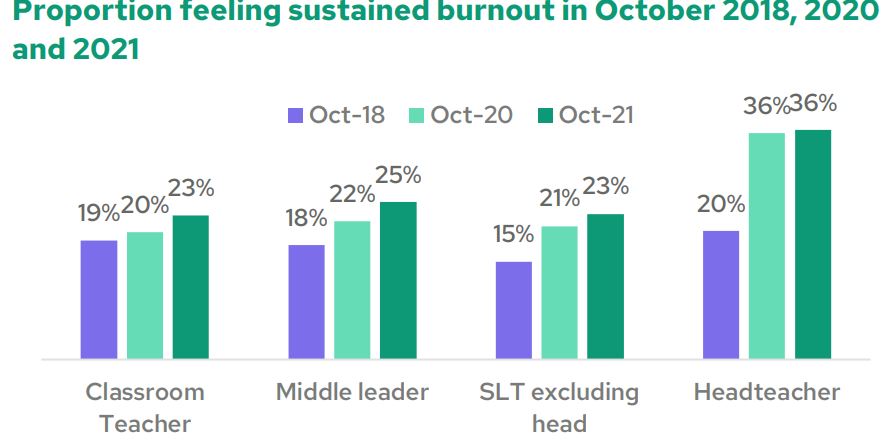Disruption to the teacher job market brought about by Covid is “disproportionately” benefiting schools in disadvantaged areas which previously struggled to fill their posts, new data suggests.
A new report from Teacher Tapp and SchoolDash also suggests fewer secondary teachers have moved schools or sought new jobs.
The Department for Education previously admitted the boost in teacher recruitment promoted by Covid-19 was expected to be “short-lived”.
Here are the most interesting findings.
1. Disadvantaged schools benefit from greater supply
Schools in the highest quartile for free school meals (FSM) eligibility have previously faced the most difficulty in filling their posts.
In May 2019, 37 per cent of teachers in the most disadvantaged schools stated they felt uncertain about whether their outstanding job adverts would be filled, compared with 27 per cent at the most affluent state schools.
This fell dramatically in 2020 and 2021, where the figure for the most disadvantaged schools was recorded at just 23 per cent and 20 per respectively.
While this is still higher than the 17 per cent recorded in low FSM schools, it represents a much smaller divide.
2. It’s a ‘buyer’s market’ when it comes to teachers . . .
In May 2021, 43 per cent of senior leaders who had issued job adverts said they had more applicants than normal, compared with 25 per cent who reported having fewer.
Similarly, the proportion of leaders expressing concerns that vacant posts would not be filled by suitably qualified candidates fell from 30 per cent in 2019 to 18 per cent in 2021.
3. …but retaining non-teaching staff ‘increasingly difficult’
SchoolDash found since summer 2021 there had been a strong recovery in the number of technician job adverts, with numbers exceeding pre-pandemic levels and mirroring demand seen in other parts of the economy.
The report said it was likely schools were competing with other sectors for these types of workers, and warned it was possible a “real shortage of technicians emerges as wages rise for alternative job opportunities”.

Professor Becky Allen, Teacher Tapp’s chief analyst and co-founder, said schools “may find it increasingly difficult to hold onto non-teaching staff…in the currently tight labour market”.
4. Fewer secondary teachers are moving school
The pandemic has ushered in a period of greater stability in teacher movement in secondary schools, the data suggests.
At secondary level, 53 per cent of teachers reported that no teacher had resigned in their subject department this year, the same as last year and a rise from 41 per cent in pre-pandemic 2019.
Meanwhile, primary movement has returned to pre-pandemic levels, with 33 per cent of staff reporting no teachers resigning at their school, the same as in 2019. Levels briefly peaked at 46 per cent in 2020.
5. Heads at greater levels of burnout…
Back in October 2018, one in five headteachers reported feeling “sustained burnout”. This leapt to 36 per cent in 2020 and 2021 as the constant pressures of Covid took their toll.
The report found that in a normal year, feelings of sustained burnout did “not tend to vary a great deal by job role” – with all roles across the school reporting between 15 and 20 per cent burnout in 2018.
This rose to 23 per cent of classroom teachers and senior leadership team members other than heads reporting feeling this way in 2021. One in four middle leaders also reported burnout this year.

6. …but are not more likely to leave
Despite higher levels of burnout the number of heads who said they were still likely to be in teaching in three years time is now higher than pre-pandemic levels.
In September 2021, 70 per cent of heads surveyed said they would likely still be in teaching in three years – down slightly from 76 per cent in 2020, but up from 67 per cent in 2019.
Moreover, the proportion of headteachers remaining in their existing school for the next academic year has risen from 86 per cent in 2019 to 93 per cent this year.
One reason for the lack of movement is that “non-headship opportunities are currently restricted’” due to the pandemic, with 41 per cent of heads saying they would leave if they could find another job that matches their current salary.
This “serves as a reminder that crises in teacher retention only manifest themselves if teachers both have a desire to leave, and a place to go which provides them with sufficient income”.








Your thoughts